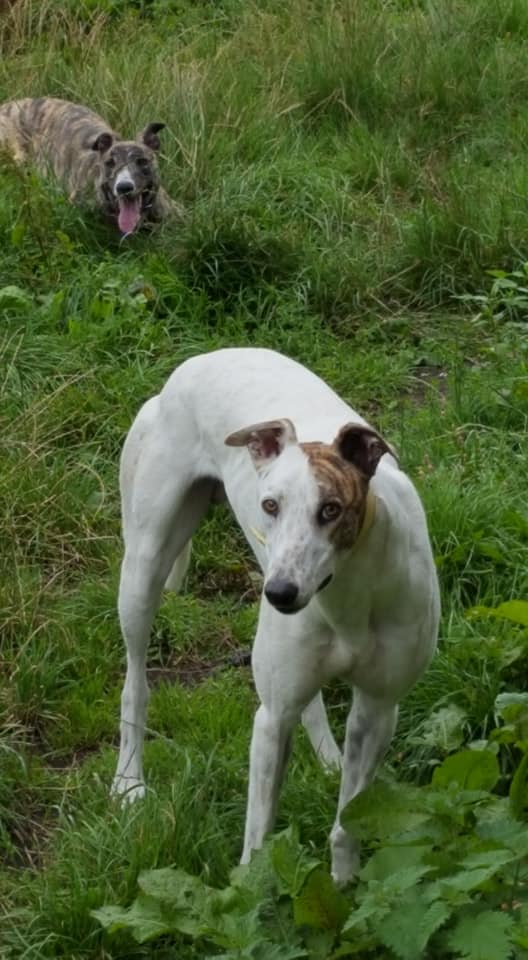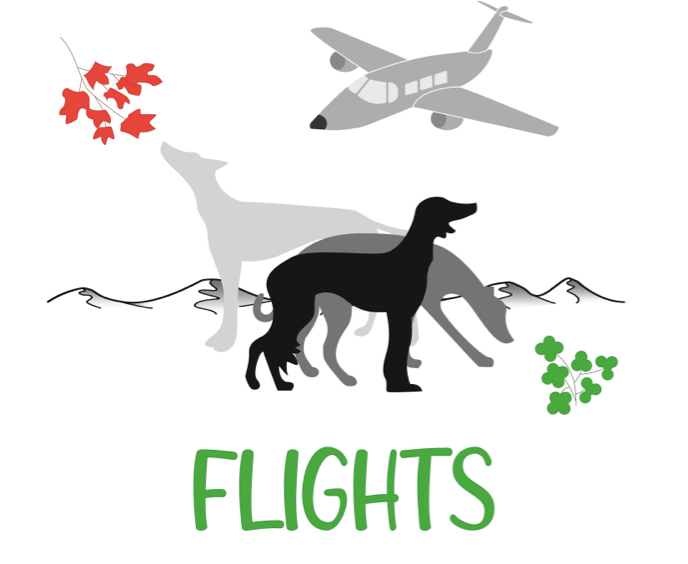British Greyhounds
The greyhound racing industry in the United States (US) has been declining for the past few years resulting in fewer dogs being bred, raced and eventually available for adoption upon retirement. This decline was hastened by 2018 legislation to end greyhound racing in the state of Florida. This has resulted in even fewer retired racers being available for adoption throughout the U.S. and Canada. Greyhound breeding and racing continues today Internationally. However, there are not enough homes available for retired greyhound racers in Ireland, Australia & Britain, so it is only logical to find them homes in North America


History of Greyhound Racing in Great Britian
Greyhound racing in the UK has a rich history, dating back to the early 20th century.
The sport arrived from the United States in 1926 and was introduced at Belle Vue Stadium in Manchester, spreading to Liverpool and London. In addition, in 1926, the first British greyhound meeting, which the dogs pursued an electrically pushed artificial hare. Which also took place at Belle Vue, Manchester.
The oval track and mechanical hare were introduced to Britain in 1926, by Charles Munn, an American, in association with Major Lyne-Dixson, a key figure in coursing.
By the mid-1930s, it had become Britain’s third largest commercial leisure time activity
Modern greyhound racing evolved from a form of hunting called coursing, in which a dog runs after a live game animal – usually a hare.
The first official coursing meeting was held in 1776 at Swaffham, Norfolk. The rules of the Swaffham Coursing Society, started by Lord Orford, specified that only two greyhounds were to course a single live hare.
The activity rapidly gained popularity and within a decade there were 200 tracks that attracted total attendances that superseded 32 million a year! In the 1940s, there were as many as seventy-seven licensed tracks and over two hundred independent tracks in the United Kingdom.
Racing
The greyhound racing industry in Great Britain currently falls under two divisions: the first sector is registered by the Greyhound Board of Great Britain (GBGB), and a second sector known as ‘independent racing’ or ‘flapping’ which is unaffiliated with a governing body.
Registered racing
Registered racing in Great Britain is regulated by the Greyhound Board of Great Britain (GBGB) and has been UKAS accredited since 2010.
UKAS is the National Accreditation Body for the United Kingdom. They are appointed by government, to assess and accredit organizations that provide services including certification, testing, inspection, calibration, validation and verification.
All that are a part of the registered sector are subject to the GBGB Rules of Racing and the Directions of the Stewards.
Who set the standards for greyhound welfare and racing integrity, from racecourse facilities and trainers’ kennels to the retirement of greyhounds.
The registered sector consists of 20 racecourses and approximately 880 trainers, 4,000 kennel staff and 860 racecourse officials. Greyhound owners’ number 15,000, with approximately 7,000–8,000 greyhounds registered annually for racing.
What is as independent racing or flapping in the UK.
Independent racing, also known as ‘flapping’, is held on just one racecourse. There is no requirement for central registration or licensing, and no code of practice. In England, standards for welfare and integrity are set by local government, but there is no governing or other regulatory body.
Main Difference Between Flapping and Licensed Racing
The primary differences between flapping and licensed racing is in the absence of an official racing body. The condition of the track, the welfare of the dogs, and their overall health are the sole responsibilities of the organizers.
There are 21 operational racecourses in the country, with 20 of them being licensed and governed by the GBGB.
The greyhound is a distinctive and very easy to recognize dog breed, and they’re common enough, however, they’re not the most popular breed in the UK, information from the Royal Veterinary College indicates that Greyhounds make up 0.6% of the UK dog population, or a shade over one in two hundred. Around one in every 200 dogs in the UK is a greyhound
Did you know
That approximately 80% of greyhounds residing in the UK, were born and raised in Ireland. Once ready to start their racing career, they travel to Britain to start their next stage of life.
